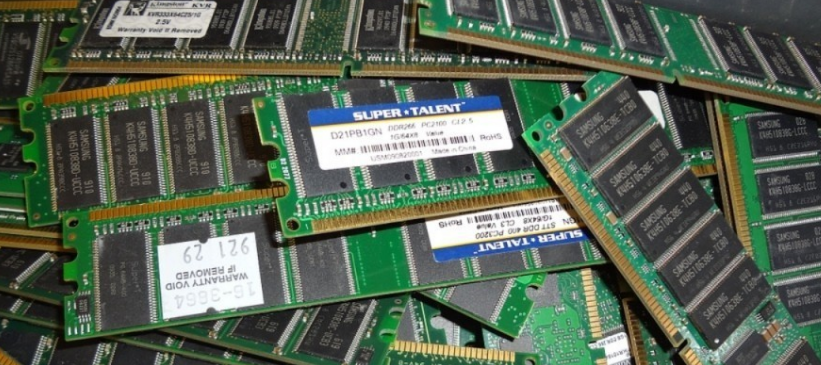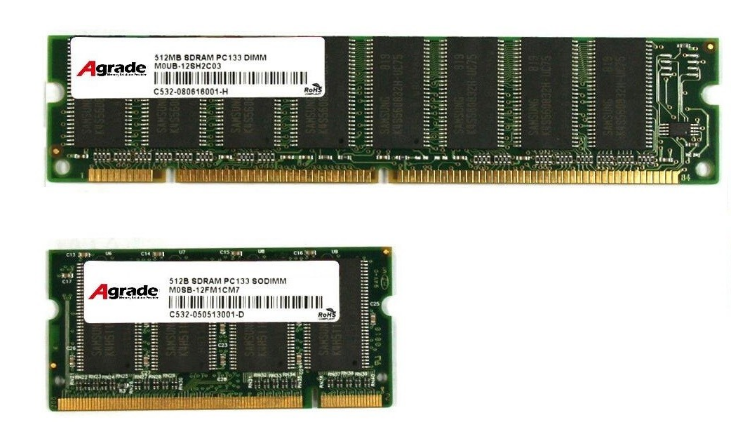
We will explain to you what types of RAM exist, telling you about their types according to size and their standards, such as DDR3 and DDR4, in addition to the future DDR5 that will soon hit the market. The idea is that when you hear about RAM, you know exactly what it is and which one you can use.
For this, we will start by defining the most basic and explaining what RAM is and what it is for. Then, after talking about its types, we will finish by telling you how to choose the one that best suits your needs.
What is RAM, and what is it for?
RAM is the main memory of a device, the one where the data of the programs you are using at the moment, Random Access Memory in English, is temporarily stored, and it has two characteristics that differentiate it. On the one hand an enormous speed, and on the other, the data is only stored temporarily. This means that when you restart or turn off your computer, it is normal that the data it had stored is lost.
Your computer or mobile does not execute all the actions using only the hard drive since if it did; it would take too long to execute them. For this reason, a much faster type of memory is used to make these tasks more immediate, and it is in charge of storing the instructions of the CPU or the data that the applications constantly need. These instructions stay there until the computer turns off or new ones replace them.
Applications in different ways can use RAM. For example, if you use a browser, all the data from the websites you visit is usually in RAM so that when you access it, it is always there and does not have to be loaded again. That is why browsers tend to take up a lot of RAM.
The applications you have open are stored in RAM, so you can use them quickly without having to continually write to your hard drive. Therefore, the more RAM you have, the more applications you can use simultaneously, which affects your device’s multifunction.
Therefore, the amount of RAM you have directly affects the performance of your device. The more you have, the more applications you will be able to manage simultaneously, hence its importance because if there are not enough of them, the computer can be slow.
What you usually refer to as RAM when you are talking about it as a physical component is some cards connected directly to your computer’s motherboard. These cards have different integrated memory modules connected, and in devices such as computers, there are slots to have several of these cards.
DIMM memory and SODIMM memory

RAMs can be of two types depending on their size: DIMM and SODIMM RAM. The first is Dual Inline Memory Modules, which you can find mostly on desktop computers, and the second is Dual Inline Memory Modules, which you will find mostly on laptops.
DIMM memory has a rectangular shape with separate holes on both sides for the connector. They are the successors of the old SIMMs from 1996, and it is the conventional RAM that we are used to seeing, whose size depends on the DDR generation to which they belong.
And then, we have SODIMM memory, which we often see in laptops, netbooks, and printers. It is smaller than DIMM memory, with modules much shorter and slightly wider, making it suitable for those fairly tight devices.
The size directly influences another of its differences: the number of contact pins, those small slots that connect to the motherboard. DIMM-type RAMs have more contacts, with a 240-pin DDR3 module and a 288-pin DDR4 module. For its part, the DDR3 SODIMM has 204 pins, and the DDR4 has 260.
Differences between DDR3, DDR4 and DDR5
There are two types of RAM. DDR (Double Data Rate) type memories are characterized by being able to carry out two operations in each clock cycle, unlike SDR (Single Data Rate) type memories, which only execute one read or write operation. To make it possible, the DDR chips are activated twice in each cycle of the clock signal, either by level (high or low) or by flank (rising or falling).
This way of working is the same in both the DDR3 and DDR4 standards and the DDR5 that will begin to be seen soon or its predecessors. However, the more modern the standard you use, the higher the speed it can operate. It is not the same to have a DDR4 with a data rate of 3.2 GB/s and a maximum transfer rate of 25.6 GB/s as a DDR5 with 6.4 GB/s and 51.2 GB/ s, respectively.
Here we leave you the summary of the speeds of the three main standards, the two most used currently and the future DDR5:
- DDR3: Data rate up to 2133 MB/s, and maximum transfer rate 17 GB/s.
- DDR4: Data rate up to 3.2 GB/s, and maximum transfer rate 25.6 GB/s.
- DDR5: Data rate up to 6.4 GB/s, and maximum transfer rate 51.2 GB/s.
Therefore, the new generations of RAM offer us higher performance than the previous ones and greater scalability and energy efficiency. Hence, if you want better performance, upgrading may be interesting. However, there is a problem: the motherboard of your device defines the RAM standard that you can use.
For example, if you have an old computer that once came with DDR3 RAM, the slots it has for RAM may be dedicated to this standard. Each one has a different connector, so you will need another motherboard if you want to use more advanced RAM.
How to know what you need
To know what RAM you need in your computer, you first have to identify its size format and then know its standard. To do this, the easiest thing to do is open your computer to see how the memory you currently use is. Identifying whether it is DIMM or SODIMM is quite simple since you only have to look at the size.
To differentiate which is its standard, you have to look at its contacts or pins, those little gold “teeth” that connect to your motherboard. DDR4 memories use 288 contacts, while DDR3 has only 240. This means that if you have one in front of the other, the one with the most contacts will undoubtedly be DDR4.
You can also differentiate them by the notch’s position, the gap between the two rows of contacts. The DDR3 memory notch is slightly placed on one side, while the DDR4 memory is somewhat more centered but minimally placed on the opposite side.
And finally, you can also have a clue thanks to the height of the modules since the DDR4 ones are usually one millimeter taller than the DDR3 ones. Of course, the width is usually the same, although all these measurements can also vary depending on some models.

Sharlene Meriel is an avid gamer with a knack for technology. He has been writing about the latest technologies for the past 5 years. His contribution in technology journalism has been noteworthy. He is also a day trader with interest in the Forex market.














![How to Watch UFC 303 Live Stream Free [Updated 2024] UFC 259 Live Stream Free](https://techsmartest.com/wp-content/uploads/2022/03/UFC-259-Live-Stream-Free-100x70.jpg)

